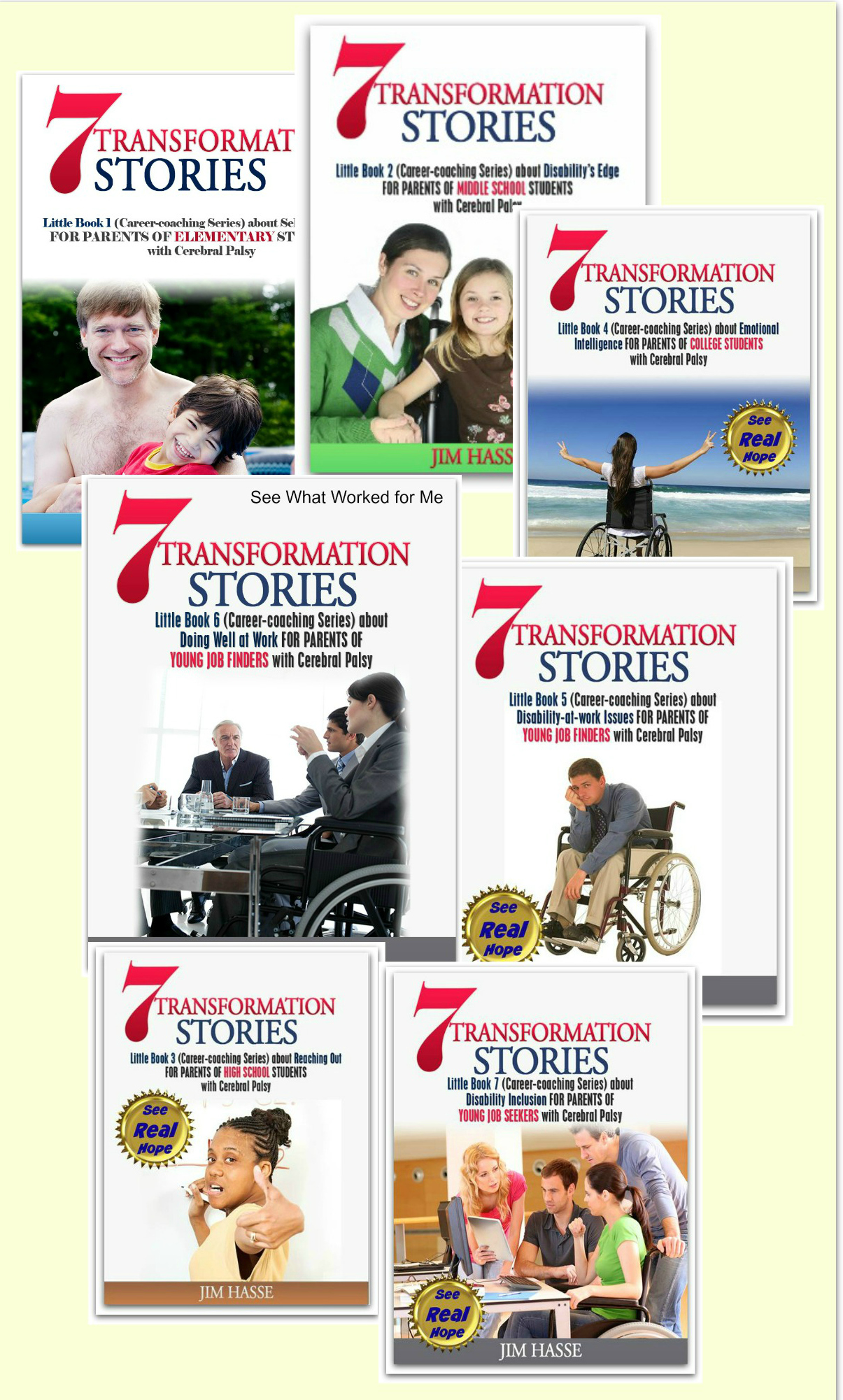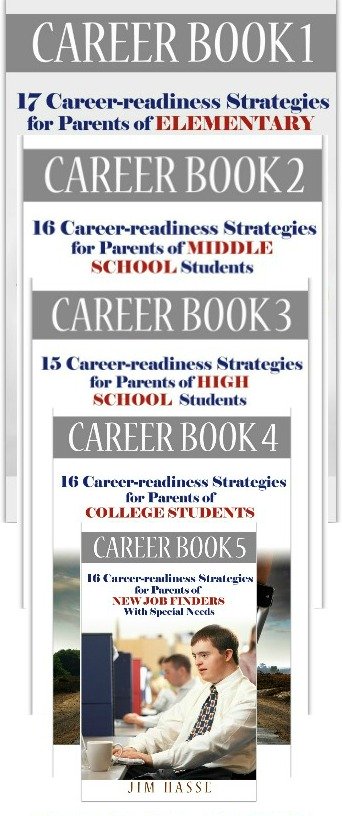Online
Jobs: Cerebral Palsy
Career Builder for Job Seekers
By Jim Hasse, ABC, GCDF, Disability Employment Expert
_________________________________________________________
There’s a hidden online jobs market that your new job seeker with cerebral palsy (CP) needs to know how to tap. The secret to knowing about those jobs is developing an online network and developing that network to do company research.
In fact, getting hired essentially involves establishing a personal relationship with one’s future supervisor based on mutual respect and dignity.
As a job seeker, your son or daughter with CP never wants to be in a position where he or she appears to be begging to be considered as a job candidate or to get hired. To avoid that kind of sinkhole, your new job seeker needs to learn how to effectively build a network of contacts within targeted companies – contacts who represent an informal online jobs market because they are the first to know about new openings within their workplaces.

Why LinkedIn Is Important for Online Jobs
That’s where LinkedIn can help. It’s an excellent tool for doing company research, building a network of contacts and receiving early announcements of online jobs.
I’m always surprised about how many new college graduates are not actively involved on LinkedIn, where open jobs on not always formally posted but, instead, are part of the online jobs market that relies on word of mouth. Being actively involved on LinkedIn can definitely give your son or daughter a competitive advantage when it comes to finding the right job.
Most of the jobs mentioned on LinkedIn are “go-to-work” type positions. But, if your young job seeker is really looking for online jobs, involving work that can be done from home, LinkedIn is also the place to start because the professionals who congregate on LinkedIn generally offer work-from-home opportunities that are legitimate and are not scams.
To tap into LinkedIn, your new job seeker first needs to use the key words he or she developed as part of personal branding to create a LinkedIn profile. That profile should include fresh stories which illustrate your son or daughter’s skills and which are not duplicated on his or her personal website or resume.
Then, at that point, I’d recommend gradually building LinkedIn connections -- connections with people who are really interested in your job seeker and are appropriate for the focus of his or her job search because they are potentially a posting source of online jobs.
Steve Frederick, partner, Frederick Career Services, suggests setting a goal of obtaining 500 solid LinkedIn connections. In doing so, he says, your new job seeker can be considered well connected online and effectively plugged into online jobs announcements for his or her particular job sector. That doesn’t happen overnight. It takes time.
How to use LinkedIn as a job seeker
Here are six
recommendations from Frederick that you may want to pass along to your new job
seeker:
- Join and routinely participate in about 12
LinkedIn groups which have strong facilitators who encourage discussion about
topics that you find interesting. If you have an article or blog posting that
is germane to a particular group’s current discussion topic, post a link to
your writing in that group. Also watch for discussions of online jobs.
- Start your own LinkedIn group, using the keywords
from your personal brand in the group’s description, if you have time and don’t find a group for your
particular job search niche. Differentiate yourself
from your competitors, narrow your groups focus and personally invite people to
join your group. The people who join your group are valuable contacts in your
network as a job seeker because they may be passing along notices about online
jobs.
- Check new hires for your targeted company. Join
the groups they have joined. Establish a mutually beneficial relationship
through those groups by congratulating them on their new jobs, talking about
their career transitions etc.
- Search Google for names of the people you want
to contact. That will round out the background you already have about them on
LinkedIn. You can even use Google to obtain last names when you only have the
last name’s initial, if you have the individual’s company and title.
- Obtain a
picture, in LinkedIn Company Search, of the employee longevity of your targeted company, the education level
of the workforce, the company’s growth, and where current employees previously
worked -- all valuable information for deciding whether the company is right
for you and whether you want to pursue its online jobs offering.
- Search
for individuals by job type and company in Advanced Search on LinkedIn. You can also search for individuals by
the number of LinkedIn connections they have. The cutoff connection number is
500, so those with more than 500 connections show “500+” connections. LinkedIn’s
networking philosophy is based on a simple rule that says that you should
invite to connect only people that you personally know (for instance, school
colleagues, co-workers, business partners, service providers etc.).
That saves time and provides an opportunity to respond appropriately with a job marketing focus -- again gaining an online presence in specific discussions with hiring managers who may mention openings for online jobs during their discussions.
Another Frederick tip: If your job seeker uses RSS, be sure he or she adds secondary e-mail addresses for that purpose for segregating RSS material in the inbox.
All of these features make LinkedIn a terrific tool for your new job seeker, who may not be as mobile as other people due to CP. LinkedIn allows him or her to do quick, easy and methodical company research and keep tabs on online jobs. It’s another example of how technology is leveling the playing field in job recruitment for people with disabilities.Return from Online Jobs to Job Finder
Go to Cerebral Palsy Career Builders
This is Creative Commons content. You can freely and legally use, share and repurpose it for non-commercial purposes only, provided you attach this sentence and the following attribution to it (including the two links):
Originally written and illustrated by Jim Hasse, ABC, GCDF, owner of Hasse Communication Counseling, LLC, who, as a person with cerebral palsy, served for 10 years as a vice president in a Fortune 500 company during his 29-year career in corporate communication. He’s an Accredited Business Communicator, certified as a Global Career Development Facilitator and author of 14 Amazon books about disability awareness and disability employment issues.





